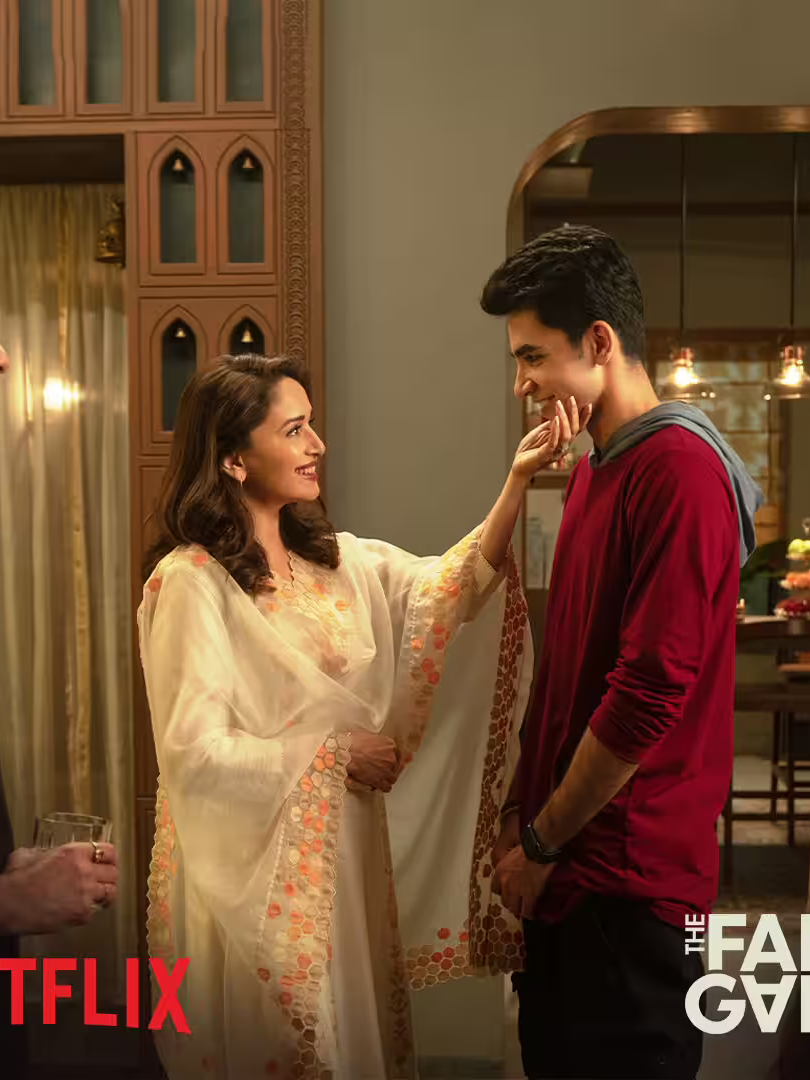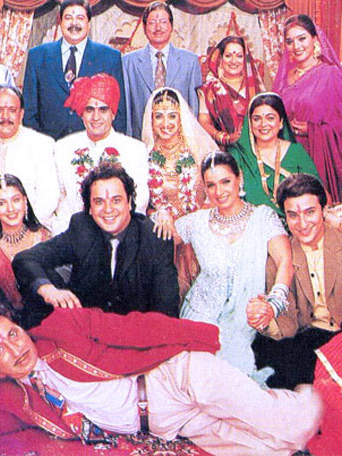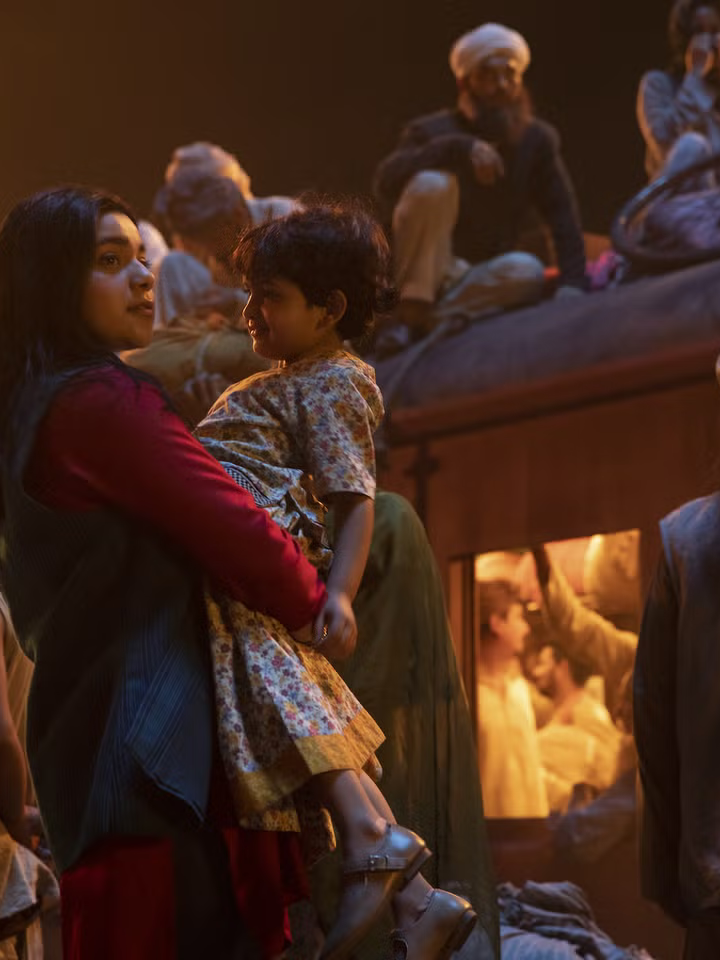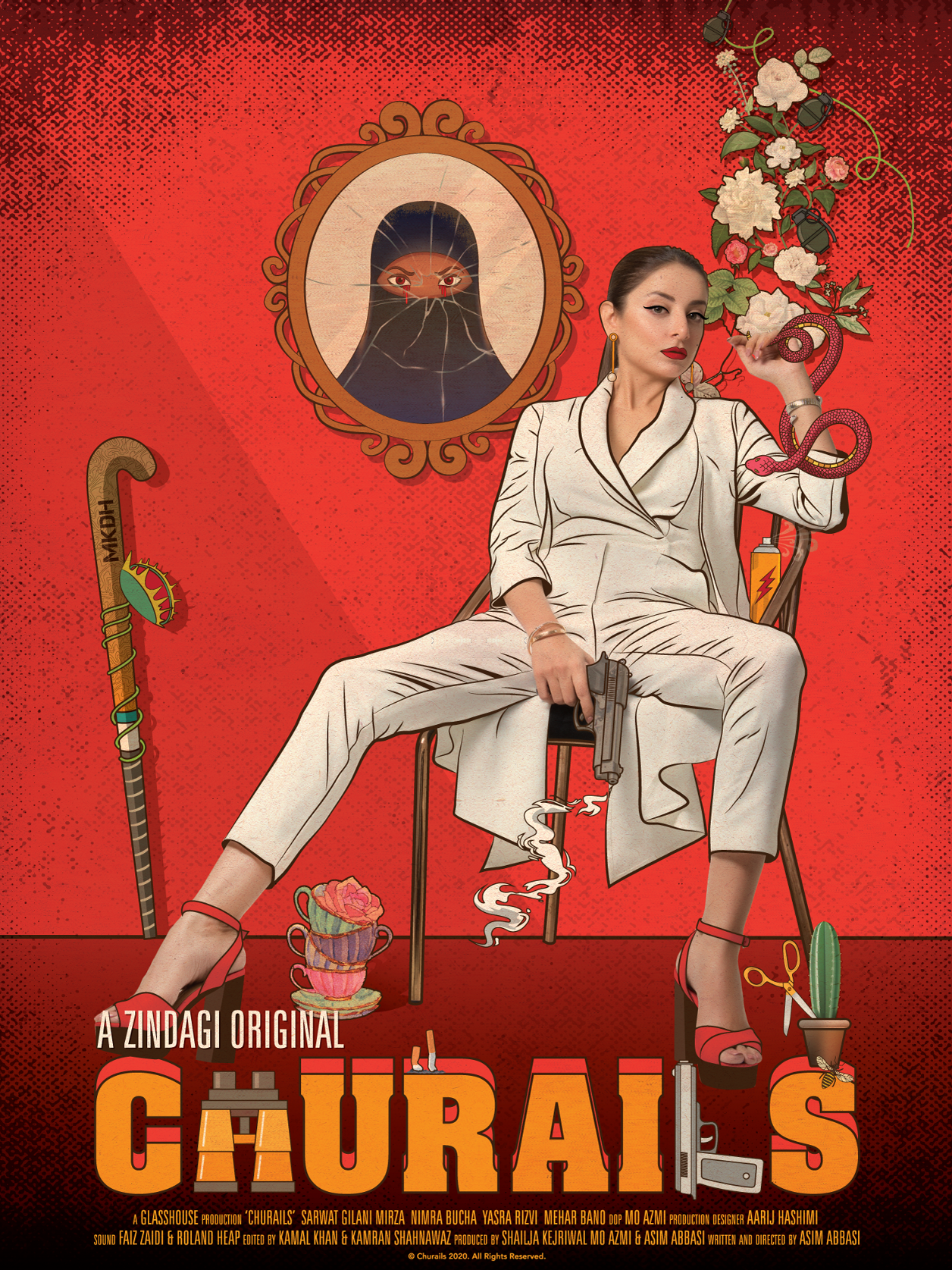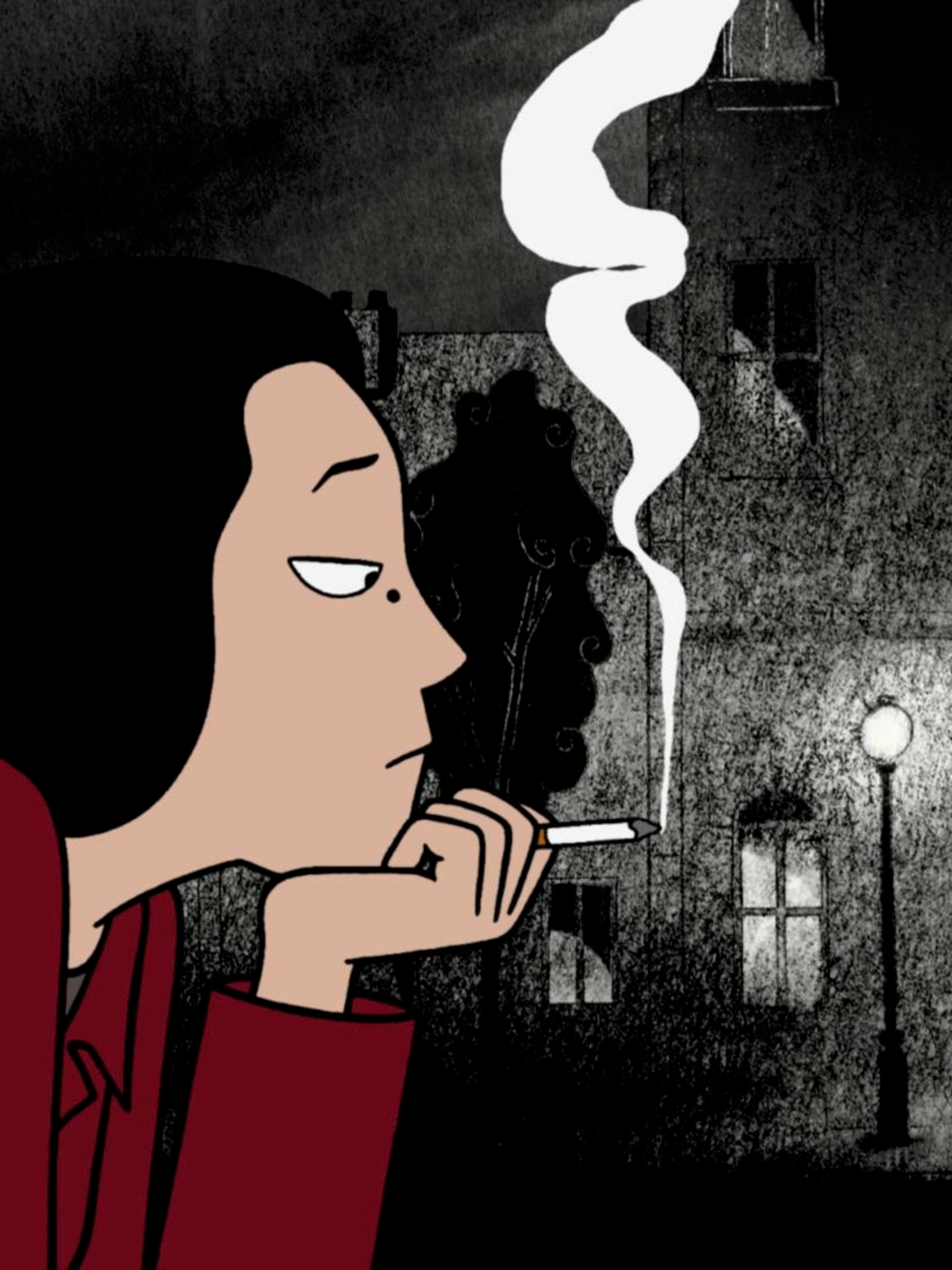Before analyzing particular songs used in the iconic film, Dilwale Dulhania Le Jayenge, it is important to be able to differentiate the different terms we’ll be using. First, let’s talk about diegetic sound versus non-diegetic sound.
Diegetic Sound: “Any voice, musical passage, or sound effect presented as originating from a source within the film’s world” (Bordwell, Thompson, & Smith, 2017).
Nondiegetic Sound: “Sound, such as mood music or a narrator’s commentary, represented as coming from a source outside space of the narrative” (Bordwell, Thompson, & Smith, 2017).
The main difference between these two types of sounds is that one is in the cinematic universe of the film and one is not. For example, if there is a scene where a couple is leaving their house, while music plays in the background, that is nondiegetic. However, if in this same scene, the music stops as the couple turns off their speakers, then the music is now an example of diegetic sound. If the sound is acknowledged by characters in the film, it is diegetic, if not, it is nondiegetic.
Of course, this differentiation becomes even more difficult in Bollywood films, where music is often used to convey the story, whether it helps in advancing the story’s plot or not.
However, the simple differentiation between diegetic and nondiegetic sound does not compensate for the variety of diegetic sounds that are within a film. Of course, we cannot cover all of them, but here are a few types.
Simultaneous Sound: “Diegetic sound that is represented as occurring at the same time in the story as the image it accompanies” (Bordwell, Thompson, & Smith, 2017).
Nonsimultaneous Sound: “Diegetic sound that comes from a source in time either earlier or later than the image it accompanies” (Bordwell, Thompson, & Smith, 2017).
Although both these terms are examples of diegetic sound, the main differentiation between these two is that with nonsimultaneous sound, “the film can present earlier story events without showing them” (Bordwell, Thompson, & Smith, 2017). For example, simultaneous sound could be external/internal dialogue, and nonsimultaneous sound could be sonic flashbacks/flashforwards. (Finally, we’re getting closer to the main portion of this piece!)
Sonic flashback: “The technique of using sound from earlier in the film during a later scene. One character may be present on the screen, but they are hearing a voice or action from a previous time in their head” (Bordwell, Thompson, & Smith, 2017). Sonic flashforwards are the same in concept, except, instead of recalling past events, the sound is foreshadowing later events.
If you’ve watched as many Bollywood films as I have, after defining what sonic flashbacks/flashforwards are, you will come to realize how these subtleties often help us understand the plot and character’s emotions within the film. For example, in the classic Bollywood film, Kabhi Khushi Kabhie Gham, directed by Karan Johar, soundtrack by Babloo Chakravarty, you will hear the iconic title track playing in the background of many scenes in different forms; sometimes as instrumental, with lyrics, or as a piano track. However, the first time the song, “Kabhi Khushi Kabhie Gham” occurs in the film is with lyrics, when the protagonist, Rahul, is coming home for a festive Diwali celebration with family.
Therefore, when the tune reoccurs again later in various scenes of the film, it can be recognized as a sonic flashback used to emphasize the protagonist's internal longing to be reunited with his family again. In this way, the use of sonic flashbacks/flash-forwards strengthen messages within a film by hinting at the audience how they should feel depending on which songs are being used as motifs and where.
The Bollywood film, 'Dilwale Dulhania Le Jayenge,' directed by Aditya Chopra and soundtrack by Jatin Lalit, explores the lives of Simran and Raj and their fight to be together. The film contains a repetitive use of music and ballads in order to dramatize situations and convey each character's emotions and stories. In particular, the film uses sonic flashbacks and flash-forwards of ballads during scenes in order to add to the audience's perception of the characters. 'Dilwale Dulhania Le Jayenge' applies sonic flashbacks of the tune "Ghar Aaja Pardesi" and sonic flashbacks and flash-forwards of "Mere Khwabon Mein," in order to emphasize individual character developments of Simran, Raj, and Babuji, as well as give context towards the growth in their relationships with one another as the plot develops.
The instrumental tune of "Ghar Aaja Pardesi" plays in the background during various scenes in the film in order to emphasize each character's relevance to Punjab. The title, "Ghar Aaja Pardesi," translates to "Come home foreigner, your country calls you" and the rest of the song carries similar themes of remembering Punjab. The full song of "Ghar Aaja Pardesi" initially plays in the beginning of the film, when Babuji is on the streets of London, feeding birds, and then mentions his home, Punjab. As soon as Babuji makes this reference, the song begins to play, however, for a moment, Babuji is still shown in London as it plays, creating a sound bridge towards the next scene where women are shown dancing and singing in Punjab, while Babuji is again feeding birds. Then the sounds of the streets of London fade in, as Babuji is still shown in Punjab, and then the full song of, "Ghar Aaja Pardesi", slowly fades out. There is then a brief pause in the background music and the rolling of the credits, and then as Babuji continues to walk through the streets of London, the full song of "Ghar Aaja Pardesi"continues to play in the background and the credits resume on screen as well.
The initial application of the song proves that although Babuji lives in London, he is still in touch with his roots in Punjab. Comparatively, when Babuji receives the letter from his old friend, Ajit, the instrumental tune of "Ghar Aaja Pardesi" begins to play in the background, as establishing it as a sonic flashback, throughout the entire scene of him and his family reading the letter and talking about its reminder of their culture and homeland. For a few lines of dialogue, the music changes in pitch from high to low, in order to highlight Simran's displeasure in her arranged marriage, that was written in the letter to happen. Nevertheless, the instrumental tune of "Ghar Aaja Pardesi" resumed, after Simran left, when Babuji continued to go on about how this letter from his friend, Ajit, was a token of their culture brought back to remind them what they have been missing. This particular sonic flashback serves to showcase Babuji's love and excitement for his homeland, Punjab, as well as all things associated towards it. This also acts as a foreshadowing of when, later on in Punjab, Babuji forces Simran to forget her love for Raj and marry Kuljit. In this way, when the instrumental tune of "Ghar Aaja Pardesi" continues to play in the background, even after Simran's abrupt exit, it emphasizes Babuji's disregard for what she wants because his strong passion towards Punjab takes a larger priority over his feelings for his daughter's happiness, in this moment.
The sonic flashbacks of the song act as motifs every time Punjab or the importance of tradition is mentioned, and likewise, also appear an overwhelming amount of times throughout the second half of the film because all the scenes within the second half of the film occur in Punjab. Throughout the first half of the film, this tune is always used around Babuji, however, during the second half of the film it is placed in the background of almost every character's interaction that occurs within the setting of Punjab. In this way, the second half of the film functions as a shift in the song's dynamic because the second half of the film is the first time that "Ghar Aaja Pardesi" is placed in the background during scenes in which Babuji is not the primary character involved, but other characters, such as Raj as well. Similarly, whenever Raj goes to feed birds in the field with Babuji, this tune plays in the background as well. Considering, how the "Ghar Aaja Pardesi" tune was initially used as a motif with only Babuji's character, this marks a change in the film's dynamic, in the sense that it emphasizes Raj's ability to adapt to what Babuji holds closest to him, Punjab, because of Raj's desire to be with Simran. Additionally, this demonstrates a growth in maturity in Raj's character.
Considering how this music is often used in direct association with Babuji, the fact that it begins to play in the background of Raj's dialogue as well, underscores Raj's slow progression towards possessing the qualities of a Punjab man that Babuji wants for his daughter, Simran. "Ghar Aaja Pardesi" serves to highlight Babuji's consistent dedication and relevance towards Punjab. Additionally, the instrumental tune demonstrates the growth in Raj's character by showing how Raj is able to modify his lifestyle to align with Punjabi culture, therefore, creating and strengthening his relationships with Babuji and Simran.
The tune of Simran humming "Mere Khwabon Mein" plays in the background of dialogue between characters, and actions going on in order to highlight Simran's growth in maturity throughout the film, as well as the similarities between Raj and Simran and the dreams they have. The hook of this song translates to:
"The one who comes teasing me in my dreams
Just ask him to face me, once
The one who comes in my dreams"
Prior to the song taking place, Simran reads a section of her diary to her mother, describing the man of her dreams.
While doing so, the tune of Simran humming "Mere Khwabon Mein" plays in the background of their dialogue, functioning as a sonic flashforward because she is shown later on singing this ballad when going into more detail while describing the man of her dreams. This sonic flashforward helps the audience understand how naive Simran's character is at this point in the film, to only repeat this tune as a sonic flashback later on, in order to show Simran's growth throughout the entire film. Furthermore, when this playful and upbeat ballad occurs after the sonic flashforward, it provides insight towards both the main characters, Raj and Simran, because when Simran breaks into song, singing about her dream partner, Raj is then introduced in the film.
This song is again heard later when Simran reads in the letter Babuji received from Ajit that she is arranged to marry Kuljit soon, she storms out of her living room and goes to her bedroom. Then, she proceeds to slowly rip out the pages from her diary, and as she does so, the tune of Simran humming "Mere Khwabon Mein" plays in the background, as a sonic flashback to when she initially sang the song with joy. The implementation of the tune proves to be contradictory because the song is about the man of Simran's dreams and it plays as she rips out pages from her diary describing the man of her dreams. Consequently, this tune functions as a reality check for Simran, and therefore, emphasizes Simran's inability to achieve her dreams and creates a huge contrast between what she fantasizes about in comparison to what she can actually obtain in reality. This use of the song as a sonic flashback, marks the beginning of Simran's road to developing a realistic ideology, and essentially growing up. Subsequently, when Raj and Simran are sitting alone during their Europe trip and Raj begins to talk about the woman of his dreams, the sonic flashback of Simran humming "Mere Khwabon Mein" plays in the background during Raj's entire dialogue.
As a result, this song serves to highlight the similarities they have with each other regarding what they dream of having in a partner. The multiple instances in which the tune of "Mere Khwabon Mein" plays in the background, occur when Simran is in an extremely vulnerable state. Therefore, when the tune plays again while Raj is speaking to her, it highlights his ability to be vulnerable as well, which appeals to Simran's emotions and strengthens their relationship as a whole. Considering how this tune as a sonic flashback had not been put into use, in association with Raj's character, prior to this scene, its application indicates a change in Raj's persona from thoughtless and comical to more introspective and romantic.
Different from the previous applications of the "Mere Khwabon Mein", when Simran is sitting with her mother in the Punjab household during the second half of the film, the tune of Simran humming this song plays in a slow and melodic manner that dramatizes the scene, when Simran grabs her mother's wrist, accepting her mother's request to willfully marry Kuljit. Accordingly, this shows Simran's acknowledgement of her past dreams, however the step forward she is making by deciding to move on from them. In brief, the repetitive use of the melody of Simran humming "Mere Khwabon Mein" establishes Simran's dreams as the starting point in her journey towards maturity. Likewise, this melody plays in the background during pivotal moments in Simran's life in order to emphasize the progress Simran has made as an individual and reinforce the idea that Raj is the man of her dreams.
The sonic flashbacks of "Ghar Aaja Pardesi" and the sonic flashbacks and flashforwards of "Mere Khwabon Mein" allocate a broader perception of Simran, Raj, and Babuji's individual character arcs and add emphasis in relation to the bonds they share with each other. Correspondingly, "Ghar Aaja Pardesi" serves to prioritize the importance of Punjab tradition and culture to Babuji, throughout every scene the instrumental tune is apparent in and helps to underline Raj's growth by his ability to adapt to Babuji's principles. Whereas, the utilization of "Mere Khwabon Mein" underlines Simran's attachment to her dreams, as well as the similarities Raj shares with Simran. However, this tune also serves to highlight Simran's growth as an individual because its continuous use between the various turning points of her life indicate her slow grasp between what is realistically attainable, in comparison to the fantasies she has always held on to. In essence, this sound technique serves a bigger implication towards the film as a whole by underscoring the importance of both, the nostalgia of past memories and dreams, as well as the important role tradition can play in the progression of Simran, Raj, and Babuji's stories.
References
Bordwell, D., Thompson, K., & Smith, J. (2017). Film Art: An Introduction (11th ed., pp. 264-302). New York: McGraw-Hill Education.
Chopra, A. (1995). Dilwale Dulhania Le Jayenge [Film]. Bollywood: Yash Raj Films.
Johar, K. (2001). Kabhi Khushi Kabhie Gham [Film]. Bollywood: Dharma Productions.
